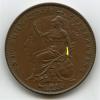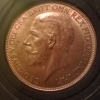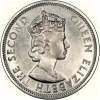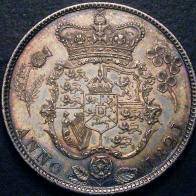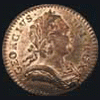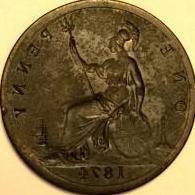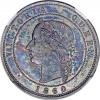My view is that such dots, seen on several of the Victorian copper pennies series, are not intentionally placed in these locations, but rather the result of a ‘foreign body’ like a piece of grit getting on to the die. The minting process then impresses into the die leaving a small dent, generally quite circular in shape but not always……….most things take a circular shape when hammered! I think that the resulting effect is often to leave a weak spot (no pun intended) on the die from which subsequent flawing can originate; I think this far more plausible than the dots being deliberately placed in these positions to prevent further cracking, and Brian has already confirmed that on his 1853 OT there is no additional flawing around his dot………...so the dot came first! I attach a further picture of an 1858 dot penny (undocumented) where one can more readily see flawing around the dot. Collectors may also be aware of an 1854PT penny with a dot in the field under the first I of VICTORIA, and also an 1859 penny with a dot near to the border teeth above the DEF colon……….these latter two coins under high magnification also show weak flawing around the dot. The 1854 and 1859 have now been categorised as varieties by CGS, although I am not too comfortable about that. Whilst an interesting feature, I do not think they are true varieties because created by fluke of minting process rather than being an intentional or erroneous action of a person.
 Coinpublications.com
Coinpublications.com
